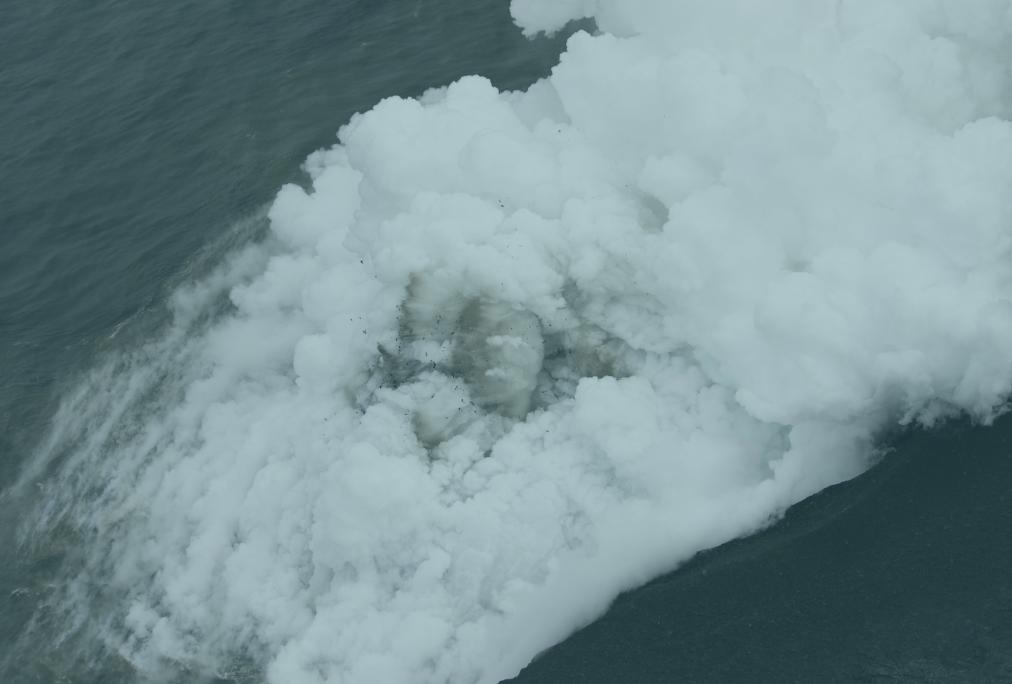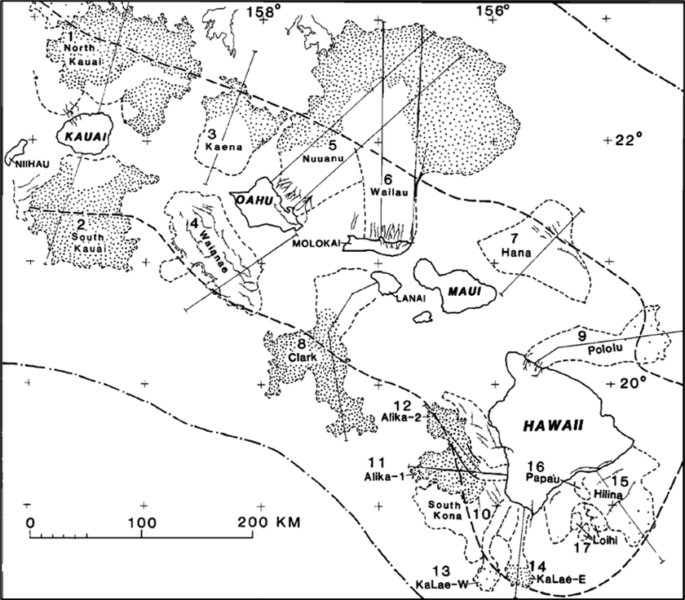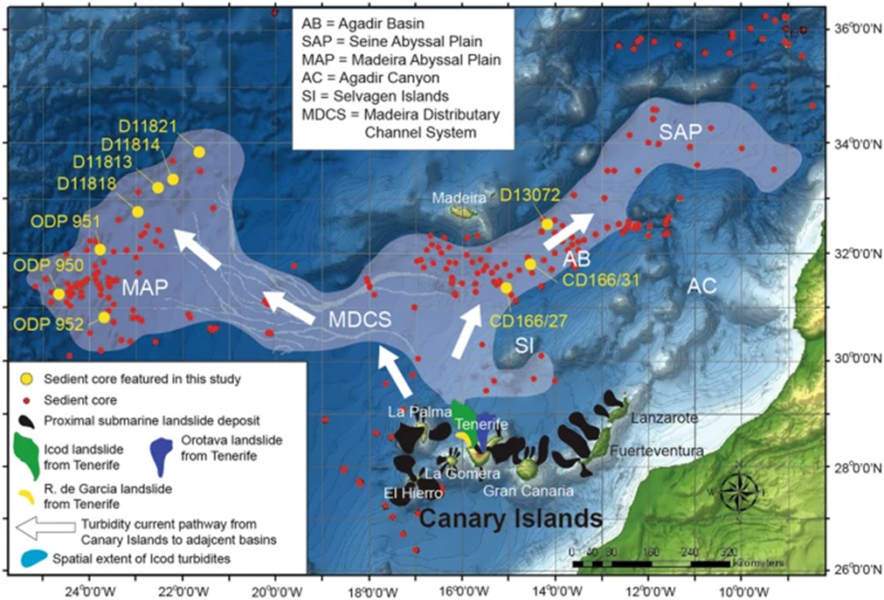Contact Us
Wednesday 19th June 2024 | Blog written by Thomas Lloyd, OiQ Graduate Route Engineer

Massive volcanic landslides are some of the largest landslides on Earth, which have several potential primary and secondary effects on submarine cable systems. The main type of massive volcanic landslide is the flank collapse, which mainly occurs on eroding dormant/extinct shield volcanoes. Flank collapses can release up to 300km³ of material in a single landslide event. No flank collapses have occurred in recorded history, although many are known in the geological record.
There is a second type of collapse called a sector collapse, these are smaller scale events (displacing tens of cubic km of material) that create similar deposits to flank collapses. Unlike flank collapses, sector collapses are associated with large explosive eruptions on active steep sided stratovolcanoes.
These massive landslides form debris avalanches into deep water and leave behind deposits that are characterised by being ‘long’ in shape with material moved up 230km from source. Debris fields of debris avalanche deposits are also highly irregular, hummocky regions that show a great range of material sizes from fine material to country sized rafted blocks. Rafted blocks are large parts of the volcanic edifice that are redeposited with the landslide, for example the Nuuanu block offshore of Hawaii has an area of 510km². Debris avalanche deposits can cover vast areas of the seafloor, the Nuuanu debris field of which the aforementioned block is a part, covers an area of 23,000km². An area larger than the state of New Jersey.
Flank collapses and their deposits are distributed mainly on ocean island shield volcanoes with prominent examples being found near the Hawaiian and the Canary Islands among others. Sector collapses are found mostly on stratovolcanoes and in ocean contexts are likely to be found in parts of the world such as Indonesia or Papua New Guinea.
Massive volcanic landslides present two main sets of risks to submarine cable systems, first the risk of an event occurring and second the ambient risks from debris avalanche deposits.
The risk of a landslide occurring in the lifespan of a cable system is extremely low. Large Tenerife- or Hawaii-style flank collapses occur once every 100,000 years. If an event did occur, it would be likely to devastate and destroy any nearby cable system with mitigation being impossible. However, due to the very low likelihood of event occurrence, this risk is not appropriate to factor into cable planning.
Debris avalanche deposits are irregular structures that offer rock outcropping and abrasion hazards from coarse material and rafted blocks. They also pose an obstacle to cable routing both from the overall deposit and from individual boulders and rafted blocks that must avoided. Debris avalanche deposits may also have areas of steep slopes or cliffs that are a hazard to cable routing. Crevasses may exist in debris avalanche deposits and provide suspension hazards, small scale rough topography such as this is a hazard that may not be resolved until detailed route survey is conducted.
A secondary hazard downslope of debris avalanche deposits exists in the form of secondary turbidity currents. These density currents, that are potentially highly damaging to cable systems, are generated from unstable sediment deposited in debris avalanches. Secondary turbidity currents spreading across the abyssal plain can cover vast areas and distances. Turbidity currents downslope of Tenerife debris avalanche deposits have travelled up to 800km away from their source.
Careful mitigation is required to minimise the hazards of debris avalanche deposits, the best form of mitigation is to try to avoid these deposits altogether. If that cannot be achieved careful marine survey is necessary to identify hazards, and considerate route engineering is necessary to route around any dangers and recommend appropriate protection measures. Secondary turbidity currents show that risks extend beyond the debris avalanche deposits itself meaning careful consideration must also be given to any cable routing downslope of these deposits. Other forms of large landslides occur in the geological record, similar deposits, hazards and mitigations are likely to occur and apply to them as it does to volcanic landslides. Therefore, similar lessons can be drawn for all types of large landslides on the Earth.

Figure 1: Map of Hawaiian submarine landslides and slumps (Moore, et al., 1989).

Figure 2: Map of Canary Islands landslide deposits (black, yellow, blue and green) with turbidite deposits (grey) (Hunt, et al., 2018)
Hunt, J. E., Cassidy, M. & Talling, P. J., 2018. Multi-stage volcanic island flank collapses with coeval explosive caldera-forming eruptions. Scientific Reports, 8(1).
Moore, J. G. et al., 1989. Prodigious Submarine Landslides on the Hawaiian Ridge. Journal of Geophysical Research, 94(B12), pp. 17465-17484.
